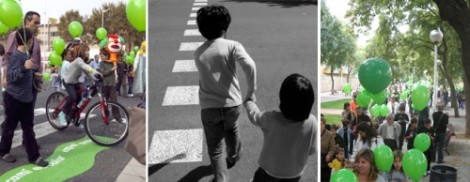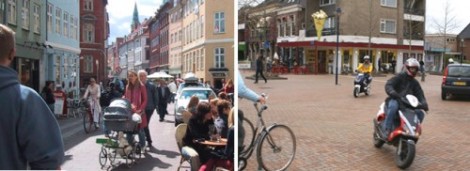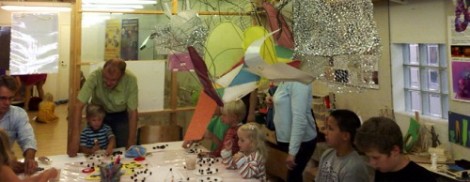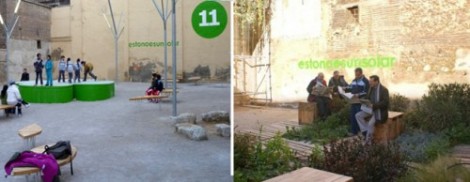“We live in cities where adults and cars define how the city is going to be. We live in cities were urban management depends on economic growth. We live in cities where nobody can play.
Cities are created to provide one solution, to create all public spaces iqual. They tend to forget that not of us like to do the same, behave in the same ones. Life means constant change and cities need to be somewhat flexible, so the can adapt to new housing needs. They need to help us live and enjoy the city.
New technologies, better transportation and new patterns of behaviour are just examples of the wide variety displayed by the cities. And in spite of this, we still seem to fall for homogenization, for creating identical cities that try to eliminate diversity and values that used to mean something.
What is a city? The meaning of city is an endless debate. Nevertheless, we can say that a city is the result of its inhabitants needs. Therefore, the city should serve the citizend and not the other way around.
People need a meeting point, a place where they can exchange experiences, a place where they can connect with each other, and why not, a place where they can play. Playing has become a difficult thing to do in our uniform public space, where all playgrounds look the same. Why bother designing different public spaces? If inspiration fails us, we can just design one that looks the same as any other.
This makes me wonder if anyone asked the children how they want their city to be. Are they aware of the city, of what it means? We always seem to debate city from thousands of perspectives, but never from the children’s point of view. And we should, because the outcome would probably be better.
The childrens’s city
Francesco Tonucci, thinker and educationist, started this project in 1991. He focused on the children’s perspective. He let them speak, think and create the city they wanted. It started in Italy and then it wen worldwide.
School Paths are an example of this. More and more cities are creating an urban city for children so they can manage in the city and gain more independence. Sure, walking to school is a rare luxuy but this safe routes also aim to revive social interaction on the streets, on public space.

Images and Info:
Interview: Francesco Tonucci, La Ciudad de los Niños.
http://w3.bcn.es
http://caminoescolar.blogspot.com/Shared-Space
Several European cities have adopted this initiative to establish areas without signals, so pedestrians, bikers and cars can share a space where speed limit and right of way fall on personal responsability. No fear. No tickets. Just people sharing a space.

Images and info:
http://www.nbr.co.nz/article/auckland-new-copenhagen-102761
http://streetswiki.wikispaces.com/Children and architecture
There is a school in Finland where children learn about architecture, about the built environment, and therefore, about the city. Arkki was founded by Pihla Meri-Tuuli Meskanen, architect and educationalist. The school wants children to be able to feel and understand their urban surroundings. When they become adults, they will be able to actively participate in high quality, sustainable education. So, whereas they become lawyers or truck drivers, they will know how a good designed city looks like.

Images and info:
Arkki http://www.arkki.nu
Flickr http://www.flickr.com/photos/sami_oinonenIn Zaragoza, Estonoesunsolar is Patrizia di Monte’s initiative that tries to find new uses to lots. They have been transformed into playgrounds, urban orchards or resting places that improve their uses quality of live.

Estonoesunsolar, Zaragoza.Contemporary cities have lost sharing – and shared – spaces that are vital for their citizens. Cities need public spaces where people can connect and share ideas and experiences. We need cities to slow down. To change into something more playful, into something a kid would like.
It is impossible to define the ideal city. We all have our own. There are as many ideal cities as people on this planet. But improving public spaces is a long term investment. Urban happiness might be hard to reach, but that does not mean we should stop trying.”


